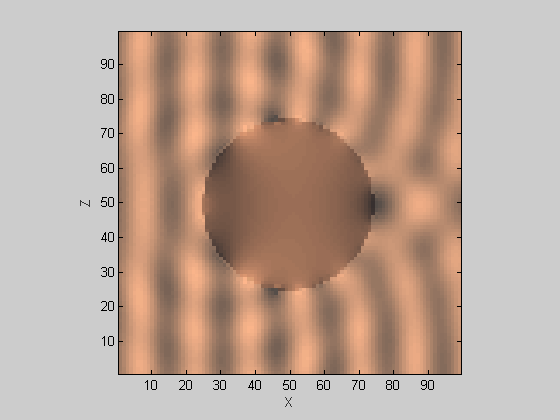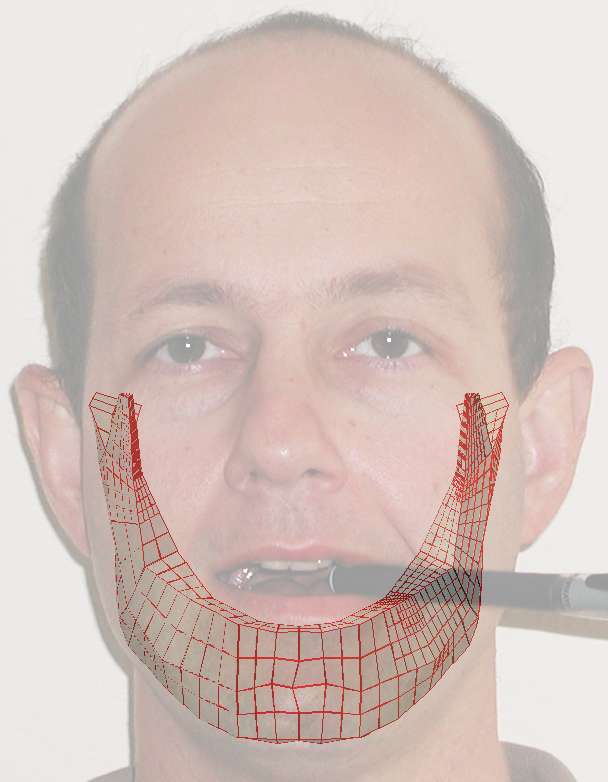
Experience is what you get when you were expecting something else.
For up-to-date information concerning my publications please refer to the Google-scholar list on this page. Also, ResearchGate has a good list at https://www.researchgate.net/profile/Petr_Krysl. My ORCID is https://orcid.org/0000-0003-1761-5047.
Here is an outdated list of my publications
My citations
Acoustic fluid-solid interaction is of particular interest to me these days. In the framework of a collaboration with Ted Cranford (SDSU) and John Hildebrand (SIO/UCSD) on problems of bioacoustics of marine mammals I have developed a simulation tool for acoustic/viscoelastic effects in complex anatomical geometries (typically derived from CT scans or MRI), with multiple fluids and viscoelastic solids, accounting for the effects of limited compressibility of water and water-saturated tissues.
A few examples:
Coronal section of a solid viscoelastic sphere excited by a train of harmonic waves in the surrounding medium (water).
Human head impinged upon by a train of 3 kHz harmonic waves in the surrounding medium (air). Data source: CT scan of a human head, Computer Graphics Group Computer Science Department University of Erlangen-Nuremberg, Germany. Limited resolution in the axial direction (2 mm), no tissue type classification available.
Coronal section of a human head impinged upon by a train of 3 kHz harmonic waves in the surrounding medium (air).
Axial section of a human head impinged upon by a train of 3 kHz harmonic waves in the surrounding medium (air).
A refined calculation on a grid of 512x 512x 504 cells (parallel execution on an eight processor Dell Precision 690 Linux machine). Visualization using volume rendering and isosurface representing the skull (the soft tissues are not shown, but they are included in the simulation).
Recently we have completed an exciting simulation: natural birth in humans. The goal was to understand the evolution of mechanical stretches in the muscles of the pelvic floor. The simulation was formulated using the element free Galerkin, and implemented in my finite element framework WASP. The results have been published in the American Journal of Obstetrics & Gynecology, (2008) ; DOI: 10.1016/j.ajog.2008.04.027.

CHARMS: h-adaptivity for general finite element approximations.
Whales/Highlight2004/WhalesHighlight2004.html
Between 1997 and 2000 I was associated with two projects at Caltech: ASCI (with Professor Michael Ortiz, mesh generation and BRep extraction algorithms), and MRSED (with Professor Peter Schroeder, model reduction).
THE GOLDEN RULE OF ARTS AND SCIENCES
The one who has the gold makes the rules.